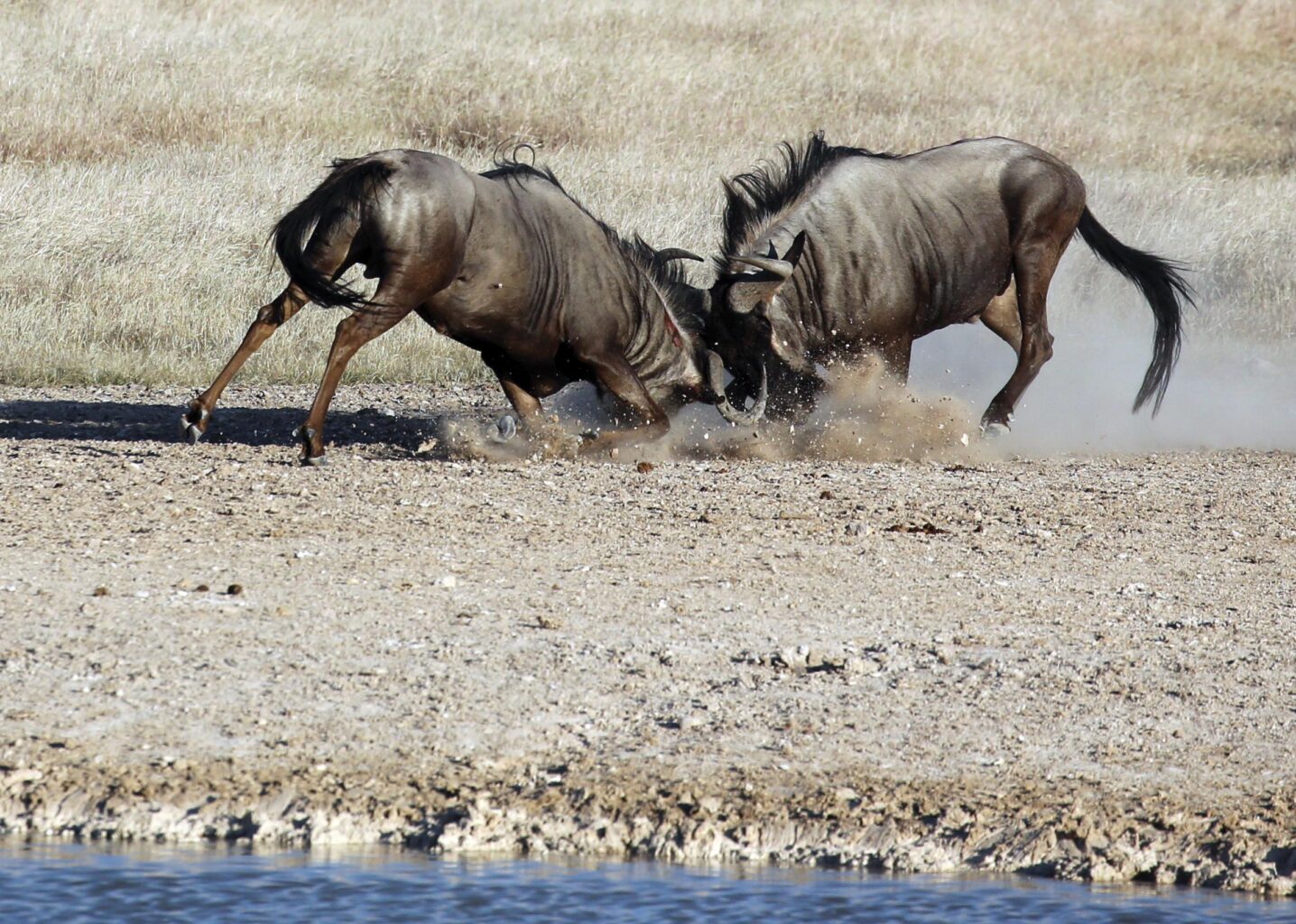

BLUE WILDEBEEST
FIGHT ENDS IN WATERHOLE
Text Dirk Heinrich | Photographs Dirk Heinrich
From the Spring 2022 issue
Territorial blue wildebeest bulls can be spotted at several waterholes in Etosha National Park. Establishing their territory around these important drinking places is like hitting the jackpot for these bulls because the females have to come to the water at least once a day. This is the opportunity to mate with many females, but it is equally exhausting to keep all the rivals at bay. For intruding bulls this is also a problem because they will be chased away by the “owner” of the territory.
The mating season of blue wildebeest, also known as brindled gnu, lasts for about three weeks and coincides with the end of the rainy season. The mating season or rut begins on the night of the full moon, suggesting that the lunar cycle might influence breeding. During this phase testosterone production peaks in males, and bulls coming to the water will often not stand back when meeting the territorial bull.
These photos were taken two days after the full moon in April this year at the Newbroni waterhole east of Okaukuejo in the Etosha National Park. It was likely the start of the mating season. The thirsty bull did not back off when the territorial bull approached, having just chased away another bull who came to drink. Once opposite each other, the two males – both in prime condition – kneeled without further delay to start their ritualised fight which lasted just over five minutes. Both bulls were strong and neither of them was going to back off. The battle was intense and gradually brought the two contestants closer to the waterhole.
Eventually they ended up in the water, with both having difficulties to kneel down. Once back on the bank the fight ended a few seconds later, as abruptly as it had started. It could not be established who the winner was – the territorial bull or the intruder.
Male blue wildebeest become sexually mature at the age of two years. The curved horns of a bull can be 83 cm long. They reach a shoulder height of 1.4 metres and attain a body mass of up to 270 kilograms. The preorbital glands are situated between the eye and the nose, and are used by the territorial male for scent-marking by rubbing the glands on the ground or low vegetation.
Blue wildebeest are large ungulate mammals of the genus Connochaetes and the C. taurinus comprises five distinct subspecies. Connochaetes taurinus taurinus (blue wildebeest or brindled gnu) is the one found in Namibia and in central to southern Africa. Individuals are silvery slate grey in colour, which is where the common name “blue” wildebeest originates from. C. t. johnstoni (Nyassaland wildebeest) occurs in southern Tanzania and Mozambique and is the largest subspecies. C. t. mearnsi (western white-bearded wildebeest) is the smallest and is found only in Kenya and western Tanzania. C. t. mearnsi is the darkest hued wildebeest while C. t. albojubatus (eastern white-bearded wildebeest) is the palest in colour and found in Kenya and eastern Tanzania. The last subspecies, C. t. cooksoni (Cookson’s wildebeest), is restricted to the Luangwa Valley. TNN






